Tag: analysis

Cost-effectiveness analysis of initial treatment strategies for mild-to-moderate Clostridium difficile infection in hospitalized patients
A decision-analytic model revealed vancomycin to be cost-effective, compared with metronidazole, for treatment of initial episodes of mild-to-moderate Clostridium difficile infection (CDI) in adult inpatients. From the hospital... read more
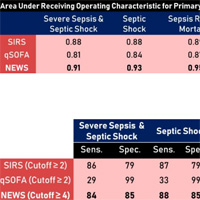
Early Sepsis Screening in the Emergency Department
This single-center retrospective analysis shows promising results with NEWS as a screening tool primarily because it can be done at triage and does not require any laboratory evaluation. This study adds to the current knowledge... read more

Relationship of at Admission Lactate, Unmeasured Anions, and Chloride to the Outcome of Critically Ill Patients
Four thousand nine hundred one patients were admitted throughout the study period; 1,609 met criteria for metabolic acidosis and 145 had normal acid-base values. The association between at admission lactate, unmeasured anions,... read more

Reducing Emergency Department Length of Stay
An interdisciplinary team of front-line physicians, nurses, medical assistants, and executives assembled and used value stream mapping to assess the entire ED care process, from patient arrival to admission or discharge.... read more
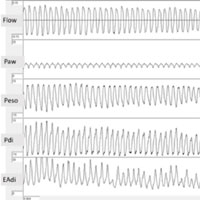
Neurally adjusted ventilatory assist decreases work of breathing during non-invasive ventilation in infants with severe bronchiolitis
In this physiological study, we report an improvement of respiratory unloading by adding a second level of pressure with NAVA in infants with severe bronchiolitis. WOB decreased immediately after switching to NAVA, as reported... read more
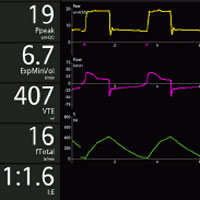
How to Improve Patient-ventilator Synchrony
Asynchronies are a frequent issue in ventilated patients. They represent a mismatch between the inspiratory and expiratory times of patient and ventilator, and thus a failure to provide ventilated patients with optimal assistance.... read more

Repeated Ambulance Use is Associated with Chronic Diseases
There is a growing demand for emergency medical services (EMS) and patients are repeatedly transported by ambulance services. For many patients, especially those with chronic disease, there may be better ways of delivering... read more
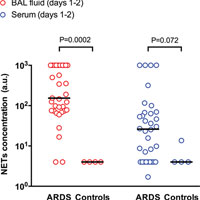
Neutrophil Extracellular Traps Are Elevated in Patients with Pneumonia-related ARDS
Bronchoalveolar neutrophil extracellular trap concentration was not significantly associated with mechanical ventilation duration in pneumonia-related ARDS. The acute respiratory distress syndrome (ARDS) is the most severe... read more
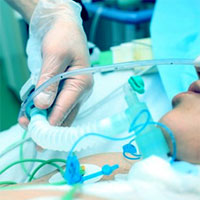
A Protocol of No Sedation for Critically Ill Patients Receiving Mechanical Ventilation
Standard treatment of critically ill patients undergoing mechanical ventilation is continuous sedation. Daily interruption of sedation has a beneficial effect, and in the general ICU of Odense University Hospital, Denmark,... read more
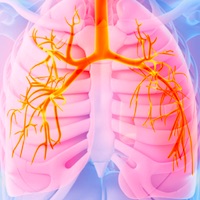
Prolonged acute and post-acute care recovery of physical function in survivors of acute respiratory failure
The proportion of survivors of acute respiratory failure is growing; yet, many do not regain full function and require prolonged admission in an acute or post-acute care facility. Patients who require prolonged admission... read more

Threshold Analysis as an Alternative to GRADE for Assessing Confidence in Guideline Recommendations Based on Network Meta-analyses
Guideline development requires the synthesis of evidence on several treatments of interest, typically by using network meta-analysis (NMA). Because treatment effects may be estimated imprecisely or be based on evidence lacking... read more
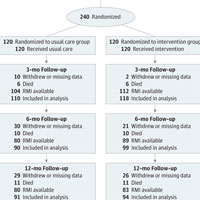
Increased Hospital-Based Physical Rehabilitation and Information Provision After ICU Discharge
Post-ICU hospital-based rehabilitation, including increased physical and nutritional therapy plus information provision, did not improve physical recovery or HRQOL, but improved patient satisfaction with many aspects of recovery.... read more
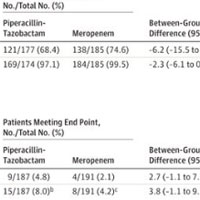
Effect of Piperacillin-Tazobactam vs Meropenem on 30-Day Mortality for Patients With E coli or Klebsiella pneumoniae Bloodstream Infection and Ceftriaxone Resistance
Among patients with E coli or K pneumoniae bloodstream infection and ceftriaxone resistance, definitive treatment with piperacillin-tazobactam compared with meropenem did not result in a noninferior 30-day mortality. These... read more

Associations of Dietary Cholesterol or Egg Consumption With Incident Cardiovascular Disease and Mortality
Among US adults, higher consumption of dietary cholesterol or eggs was significantly associated with higher risk of incident cardiovascular disease (CVD) and all-cause mortality in a dose-response manner. 29,615 adults pooled... read more








